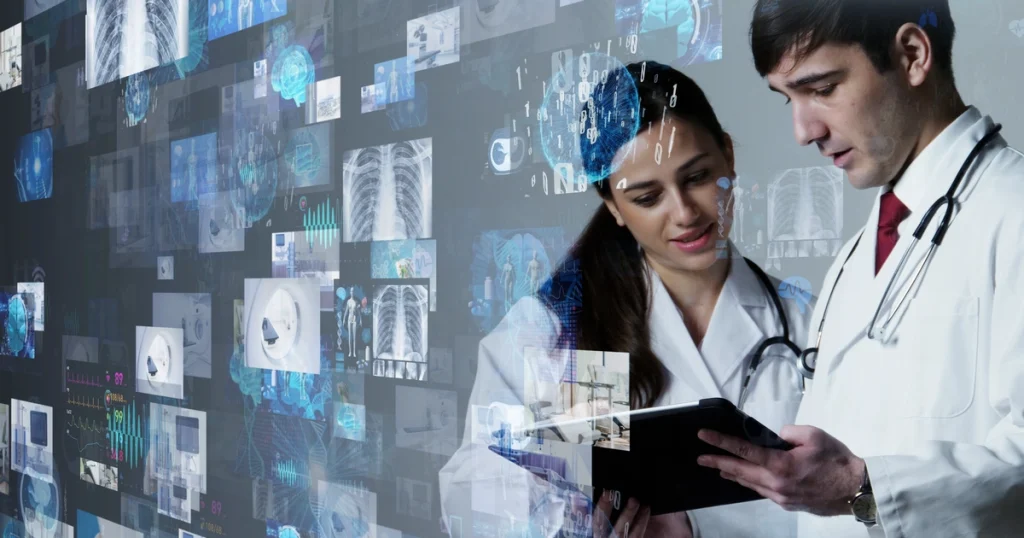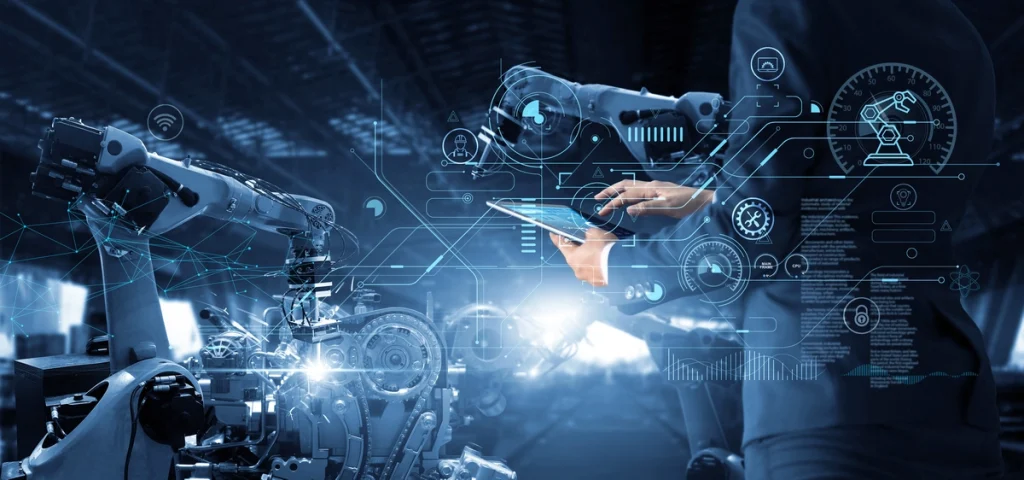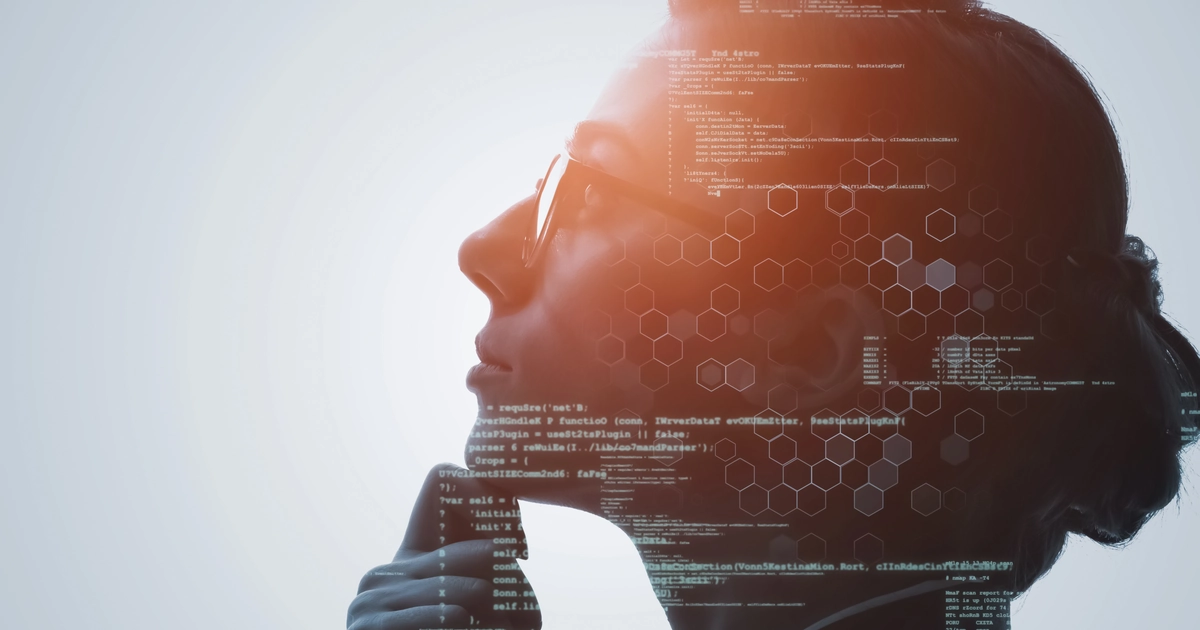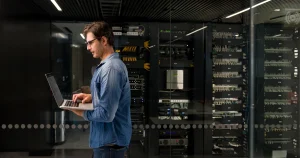The rapid evolution of AI is fundamentally changing the way we work and the nature of our professions. According to a McKinsey & Company report, up to 800 million people could lose their jobs by 2030, while more than 500 million new occupations are expected to be created. How should we adapt and seize new opportunities in the face of this dramatic change? This article will explore in detail how AI is transforming the economy, the skills needed and strategies for survival as unemployment and new occupations are created.
Labor Market Upheaval Driven by AI: Outlook to 2030
The rapid evolution of artificial intelligence (AI) is fundamentally changing the way we work and the nature of our profession. This wave of change has already begun to affect many industries, and its impact is expected to accelerate over the next decade.
According to a recent report by McKinsey & Company, up to 800 million jobs could be lost to AI and automation by 2030. This is a staggering figure, equivalent to about 10% of the world's workforce. But this transformation does not mean mere job loss. At the same time, more than 500 million new jobs are projected to be created.

Industry Swallowed by Wave of Automation
Particularly susceptible are the following industries
- manufacturing industryRobot assembly work on an automobile production line
- logistics industry: AI-controlled robots picking products at Amazon's distribution center
- finance business: Automation of investment decisions and loan screening by AI
- retail trade: Introduction of unmanned cash registers and AI-based inventory management systems
- call center: AI Chatbot Customer Service
For example, at Toyota plants, robots are now responsible for about 80% of welding, painting, and other tasks that were previously performed by humans. This has greatly improved production efficiency and reduced human error.
In addition, robots controlled by AI are picking and packing goods at Amazon's distribution centers. As a result, the distance walked by human workers has been significantly reduced and work efficiency has reportedly improved by approximately 501 TP3T.
Impact of AI on Job Loss
However, this wave of automation could pose serious problems for many workers. Low-skilled workers and workers engaged in simple tasks will be particularly hard hit.
According to a study by Oxford University, approximately 471 tp3t of U.S. jobs could be lost to automation within the next 20 years. This figure suggests the potential for major disruptions in the labor market.

New Occupations Emerging in the AI Era
On the other hand, there are a number of new occupations that will be created as a result of the spread of AI. Many of these occupations are based on collaboration between AI and humans and require a high level of expertise and creativity.
1. AI Engineer / Data Scientist
Demand for professionals to develop and operate AI systems and analyze big data is surging, with IBM research predicting that data scientist jobs will increase by 281 TP3T from 2020 to 2028.
These experts play a key role at the core of AI systems, developing machine learning algorithms, pre-processing data, and evaluating models. For example, Google's data scientists create innovative AI-based solutions in a variety of areas, such as improving search algorithms and optimizing advertising.
AI Ethicist
They are experts in evaluating and managing the ethical use of AI and its impact on society; as AI decisions have a profound impact on human life, it is becoming increasingly important to ensure its fairness and transparency.
For example, Microsoft has established an AI Ethics Committee to develop ethical guidelines for the development and use of AI. Such efforts will be needed by more companies in the future.
3. robot psychological counselor
As humans and AI continue to coexist, the demand for specialists to facilitate the relationship between the two is expected to increase. This will not only involve teaching people how to operate AI, but will also serve to reduce the psychological stress and anxiety caused by coexistence with AI.
For example, when introducing Pepper, a humanoid robot developed by Japan's SoftBank Robotics, specialists were needed to facilitate communication between the robot and humans.
4. AI-assisted creator
These are professionals who utilize AI to perform creative tasks. For example, a human creator could play a role in creating more sophisticated works based on AI-generated images and text.
In fact, efforts have already begun to use AI to create works of art and to complete AI music generation with human editing. For example, "Hello World," a song composed using AI, was edited by a human music producer and became a successful commercial music piece.

Skill sets needed to adapt to change
With the rise of AI, the skill sets required in the labor market are changing dramatically. In order to be successful in the future, it will be essential to acquire the following skills
AI Literacy and Digital Skills
- Mastery of programming languages (Python, R, etc.):
Programming skills fundamental to AI and data analysis will become increasingly important, and Python in particular is widely used in the fields of machine learning and data analysis and is well worth learning. - Data analysis and visualization skills:
The ability to extract meaningful insights from vast amounts of data and present them in an easy-to-understand manner is in demand in many industries. For example, skills in using data visualization tools such as Tableau are highly valued in business analysis. - Fundamentals of Machine Learning:
Understanding the basic concepts of machine learning, a core AI technology, is a major advantage when working with AI. The "Machine Learning" course on the online learning platform Coursera is gaining popularity around the world as an introduction to the field.
Soft skills and critical thinking
- creativity:
The ability to refine AI-generated ideas will be critical. For example, the advertising industry is beginning to collaborate with human creators to edit AI-generated ad copy and create more effective ads. - emotional intelligence:
In teamwork and leadership, the ability to understand and respond appropriately to human emotions is a critical skill that cannot be duplicated by AI; a Google study found that teams with high emotional intelligence were 15% more productive than teams without it. - problem-solving ability:
The AI must be able to interpret the data presented by the AI and exercise good judgment in executing it. For example, in the medical field, human judgment plays an important role in the form of doctors interpreting the results of AI-based diagnostic support systems and making the final diagnosis.

Strategies for Success in the AI Era
Surviving and thriving in the age of AI requires more than simply acquiring skills; it requires a strategic approach throughout your career. Below are some key strategies to help you do just that.
1. lifetime learning attitude
In order to keep up with the evolution of technology, it is important to keep learning new skills. This "ability to keep learning" will be your greatest weapon to survive in the AI age. Some specific ways to do this include the following
- Utilization of online learning platforms:
Platforms such as Coursera, edX, and Udemy offer the latest AI technologies and digital skills. For example, the "AI Fundamentals" courses offered by Google and IBM cover everything from basic AI concepts to practical skills, and are highly regarded by many learners. - Participation in industry conferences:
Attending conferences is an effective way to learn about the latest trends in the AI field. For example, international conferences such as "NeurIPS" and "ICML" present cutting-edge research results in AI, allowing you to keep up with the latest trends in the industry. - Utilize in-house training programs:
Many companies offer AI training programs for their employees. For example, Amazon has developed a program called "Machine Learning University" for its employees to help them improve their AI skills.
2. flexible career design
By not sticking to a single specialty and aiming for a T-shaped workforce that spans multiple disciplines, you can build a professional life that is resilient to change.
- Cross-functional experience:
Experiencing different departments and roles can give you a broader perspective and skill set. For example, an engineer can gain experience working in the marketing department to develop the ability to view issues from both a technical and business perspective. - Side hustle or freelance experience:
By gaining side hustle or freelance experience in a field different from your main job, you can gain new skills and contacts. In Japan, the trend toward "lifting the ban on side jobs" is gaining momentum, and many companies are now allowing their employees to work on the side.
3. refine skills for working with AI
Cultivate the ability to effectively utilize AI to create value that only humans can deliver.
- Active use of AI tools:
By actively utilizing AI tools in your daily work, you can naturally acquire the skills to collaborate with AI. For example, by mastering tools such as Grammarly (text proofreading AI) and Canva (design AI), students will develop an understanding of the characteristics and limitations of AI and the ability to use it effectively. - Participation in AI projects:
If your workplace has AI-related projects, actively participate in them. For example, getting involved in a chatbot implementation project in the customer service department can help you learn how to use AI systems in practice.

Predictions for the Future by Industry as Changed by AI
The impact of AI varies widely across industries. Here is a closer look at the impact of AI in key industries and the resulting occupational changes.
Medical/Healthcare Industry
In the medical field, AI is increasingly being used to support diagnosis and optimize treatment plans. For example, IBM's Watson for Oncology has attracted attention as an AI system that suggests cancer treatment options.
- Newly created professions: AI Medical Data Analyst, Medical AI Ethicist
- Changing Existing Occupations: Radiologists (diagnostic imaging support by AI), nurses (patient monitoring support by AI)
finance business
In the financial industry, AI is increasingly being used to automate investment decisions and loan screening. For example, JPMorgan Chase has introduced an AI system called COiN, which has significantly reduced the time required to review contracts.
- Newly created professionsAI Trader, FinTech Product Manager
- Changing Existing Occupations: Investment analysts (AI-based analytical support), loan examiners (AI-based credit scoring)
manufacturing industry
In the manufacturing industry, AI and robotics are being combined to fully automate production lines. For example, Tesla's "Gigafactory" has a highly automated system controlled by AI.
- Newly created professions: AI Robotics Engineer, Smart Factory Manager
- Changing Existing OccupationsQuality control personnel (AI assisted defective product detection), production planners (AI assisted demand forecasting and optimization)
education-related industries
In the education field, AI-based personalized and optimized learning and educational data analysis are attracting attention. For example, Knewton's adaptive learning platform optimizes content according to each student's learning progress.
- Newly created professionsAI Learning Designer, Educational Data Scientist
- Changing Existing OccupationsAI : Teachers (AI-based tutoring support), Curriculum developers (AI-based learning effectiveness analysis)

Career Strategies to Survive in the Labor Market in the AI Era
As the labor market undergoes major changes with the rise of AI, a strategic approach is essential for individuals to succeed in their careers. Below are some specific strategies and how to put them into practice.
1. diversification of skills and deepening of expertise
It is important to become a T-type human resource, that is, one who combines broad knowledge with deep expertise.
Practice Methods:
- Choose one major area of specialization and acquire in-depth knowledge and skills in that area
- At the same time, acquire basic knowledge in 2-3 related areas
- For example, specializing in data science, but also learning the fundamentals of business analysis and UX design.
2. continuous learning and skill updating
It is important to continually absorb new knowledge and skills to keep up with the evolution of technology.
Practice Methods:
- Develop an annual study plan and set monthly study goals
- Take advantage of online learning platforms (Coursera, edX, etc.) to take the latest courses
- Regularly attend industry conferences and study groups to keep up with the latest trends
3. networking enhancement
Human networks are essential for expanding career opportunities and acquiring new knowledge.
Practice Methods:
- Actively utilize professional social networking sites such as LinkedIn
- Attend industry events and meetups to interact with peers and people from other industries
- Be active in online communities (e.g., GitHub, Stack Overflow) and connect with experts
4. fostering entrepreneurial spirit
As the evolution of AI creates new business opportunities, entrepreneurial thinking is a great weapon.
Practice Methods:
- Experience running a small business through side hustles and freelance activities
- Use a crowdfunding platform to start a small project
- Participate in entrepreneurial workshops and accelerator programs
5. strengthening creativity and innovation capabilities
As AI replaces routine tasks, human creativity becomes increasingly important.
Practice Methods:
- Learn and practice design thinking and innovation methods (e.g. SCAMPER method)
- Develop the habit of combining knowledge from different fields (e.g., technology x art, science x philosophy)
- Regular brainstorming sessions to develop idea generation skills

AI-Human Collaboration: Best Practices and Future Prospects
AI and humans can work together to create unprecedented value. Below we explore successful examples of AI-human collaboration and the possibilities for the future.
Collaboration in the Medical Field
case: An AI system developed by Google DeepMind has improved the diagnostic accuracy of radiologists in detecting breast cancer: human physicians complement cases that are easily missed by AI, and conversely, AI detects minute changes that are easily missed by humans, improving overall diagnostic accuracy.
Future Outlook:
- Standardized combination of initial screening by AI and final diagnosis by a human physician
- Development of personalized medicine combining patient genetic information with AI-based analysis
Collaboration in the Financial Sector
case: JPMorgan Chase implemented an AI system called COiN to streamline the document review process for commercial loan agreements, with the AI performing initial checks of the documents and human experts performing final review, significantly reducing work time while also improving accuracy.
Future Outlook:
- Sophisticated investment strategies that combine AI market analysis with the intuition of human traders
- Collaboration between AI and human auditors in fraud detection to build more sophisticated monitoring systems
Collaboration in the creative field
case: AIVA, an AI-powered composition tool, supports composers in the creative process: AI generates basic melodies and harmonies, which are then edited and refined by human composers, resulting in original compositions.
Future Outlook:
- Generalized combination of idea generation by AI and selection and refinement by human creators
- Collaboration of AI scenario generation and editing by human screenwriters in film production

Summary: Keys to Surviving the AI Era
The rise of AI certainly threatens many professions, but it also creates new opportunities. To navigate through this period of change, it is important to
- Continuous learning and adaptability: To keep up with the evolution of technology, it is essential that you are always willing to keep learning new skills.
- AI literacy and digital skills: Many workplaces will require an understanding of the basic mechanics of AI and the ability to make use of it.
- Refining creativity and emotional intelligence that only humans are capable of.: The key to differentiation is to develop unique human abilities that cannot be imitated by AI.
- Flexible career design and acquisition of multiple skill sets: Developing skills across multiple disciplines, rather than relying on a single specialty, will help you build a professional life that is resilient to change.
- Developing skills to work with AI: The ability to effectively utilize AI and combine it with human capabilities to create new value will be critical.
The age of AI will be a time of great opportunity for those who are willing to learn and adapt without fear of change. Designing your own career proactively and preparing now to evolve with AI will be a shortcut to future success.
Technological advances continue to accelerate without stopping. However, human adaptability and creativity also have unlimited potential, and our greatest weapon for surviving the coming age is not fear of the AI era, but the attitude to utilize it and grow together with it.
[Ref.]
- McKinsey Global Institute.(2017). Jobs lost, jobs gained: workforce transitions in a time of automation.
- World Economic Forum.(2020). The Future of Jobs Report 2020.
- Frey, C. B., & Osborne, M. A. (2017). The future of employment: how susceptible are jobs to computerisation? Technological forecasting and social change, 114, 254-280.
- Brynjolfsson, E., & McAfee, A. (2014). The second machine age: Work, progress, and prosperity in a time of brilliant technologies. www Norton & Company.
- Acemoglu, D., & Restrepo, P. (2018). Artificial intelligence, automation and work (No. w24196). National Bureau of Economic Research.











